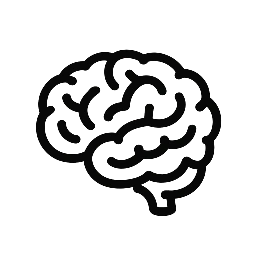Large Language Models (LLMs) like GPT, BERT, or T5 don’t think like humans, but they do perform a complex series of steps that allow them to understand text, track context, and generate human-like language. Here’s a breakdown of how they do it, step by step.
Step 1: Tokenization — Breaking Text into Pieces
Before processing any input, LLMs split text into smaller chunks called tokens. A token might be a word or punctuation. For example:
Input: “Transformers are powerful.”
Tokens: ["Transform", "ers", " are", " powerful", "."]Each token is then assigned a number (token ID), which the raw data LLMs can work with.
Step 2: Embeddings — Turning Tokens into Vectors
Since machines can’t “read” text, each token ID is converted into a vector—a list of numbers that captures the token’s semantic meaning.
This is known as embedding. For instance, “king” and “queen” might have vectors close to each other, with a consistent difference representing gender. Embeddings allow the model to detect relationships like:
"king" - "man" + "woman" ≈ "queen"These vectors are fed into the neural network for deeper analysis.
Step 3: Encoding — Understanding Context
The encoder component (used in some LLMs like BERT or T5) looks at all the input tokens and analyzes how they relate to one another.
For example:
- “The bank approved the loan.” → bank = financial institution
- “He sat by the bank of the river.” → bank = river edge
Thanks to this step, the model disambiguates meaning based on context.
Step 4: Attention — Focusing on What Matters
This is where transformers come in. They use a mechanism called self-attention to determine which words should be emphasized during processing.
When reading a sentence, the model calculates attention scores that help it focus on relevant words:
In “She picked up the baby because she was crying,” attention helps the model decide whether she refers to the woman or the baby.
This allows the model to preserve nuance across long and complex texts.
Step 5: Decoding — Predicting the Next Word
In decoder-based models (like GPT), the system uses the processed context to generate output one token at a time.
- Predict the most likely next token based on previous ones.
- Append it to the input.
- Repeat the process.
This is known as autoregressive generation. You see this in action when an AI model writes one word at a time in chat or text interfaces.
Neural Network Architecture: Encoder, Decoder, or Both?
LLMs can be:
- Encoder-only (e.g., BERT) → Good for understanding tasks like classification.
- Decoder-only (e.g., GPT) → Good for generating text.
- Encoder-decoder (e.g., T5) → Good for tasks like translation or summarization.
Each architecture uses the transformer’s attention mechanism, but in different ways.
From Input to Output: The Full Journey
| Step | Machine Operation | What You See |
|---|---|---|
| Tokenization | Text → tokens | – |
| Embedding | Tokens → vectors | – |
| Encoding | Understand meaning | – |
| Attention | Focus on relevant info | – |
| Decoding | Predict next tokens | Text generated word by word |
Key Concepts That Power LLMs
- Token: A small chunk of text
- Embedding: Vector representation of a token
- Transformer: Core architecture that processes language
- Attention: Mechanism to weigh important input tokens
- Decoder: Predicts and generates output token by token
Why It Matters
LLMs don’t “understand” like we do, but by learning patterns in language and context, they can simulate communication. Their success lies in data, math, and scale, not consciousness.
By knowing how each step works, we can better evaluate where biases arise, how multilingual processing happens, and where transparency matters.
In the next article, we’ll explore how LLMs learn and manage multilingual communication.
👉 Read next: How Do LLMs Learn and Handle Multiple Languages?
Curious about the energy and cost behind each article? Here’s a quick look at the AI resources used to generate this post.
🔍 Token Usage
Prompt + Completion: 3,200 tokens
Estimated Cost: $0.0064
Carbon Footprint: ~15g CO₂e (equivalent to charging a smartphone for 3 hours)
Post-editing: Reviewed and refined using Grammarly for clarity and accuracy
Tokens are pieces of text AI reads or writes. More tokens = more compute power = higher cost and environmental impact.
